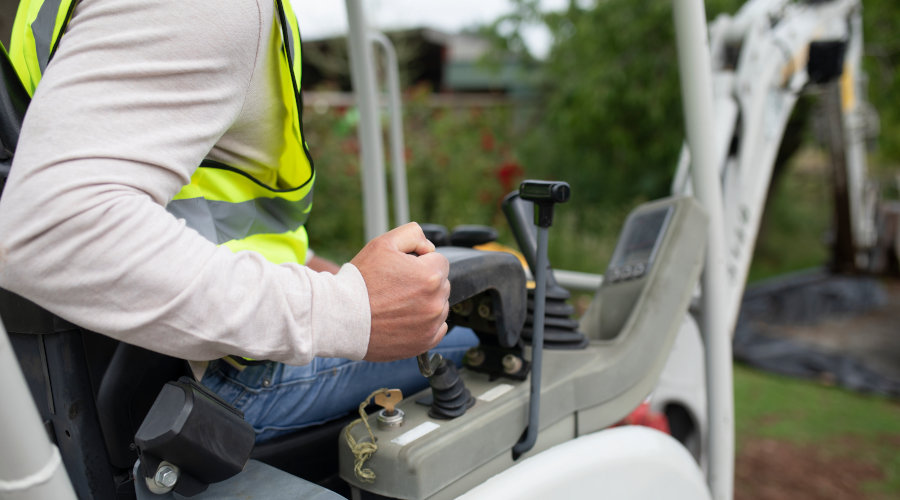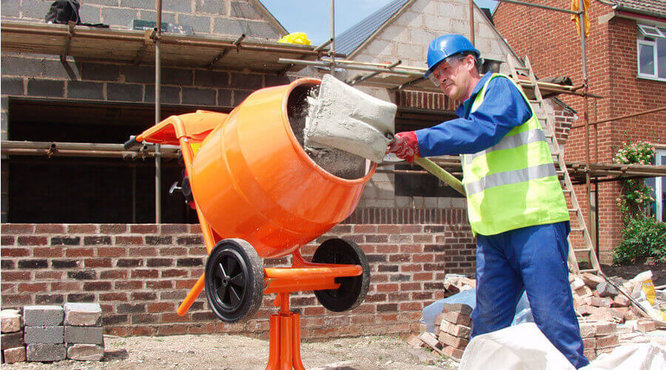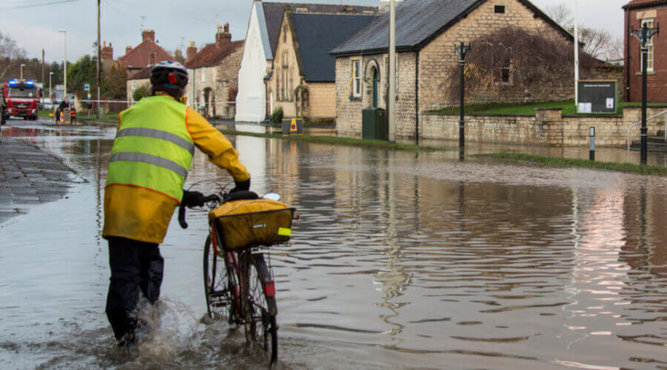How to Use a Mini Excavator
Familiarise yourself with your mini digger's instruction manual and any warning stickers that are present. Next, examine the machine to ensure no loose or damaged parts. Check for leaks, damaged cables, problems with the tracks, and other potential hazards.
Ensure that you fill the plant with enough fuel to run for the job. Remember that the rules for using white diesel and red diesel (rebate fuel) have changed. Ensure that the way you fill your excavator is in keeping with the current laws. You can only use rebated diesel for specific sectors, including agricultural, horticultural, and farming, or public services, like gritting icy roads. Unfortunely, construction and DIY doesn't quality. Next, check the engine lubricant and coolant levels, and locate the fire extinguisher. Now you can climb into the operator's console.
Inside the mini excavator, you will find an armrest and controls on the left-hand side. It is usually pushed up and out of the way of the door. Pull the armrest down and lock it into place. Next, fasten your seatbelt securely and look around the operator's console. Locate all the gauges and available controls and establish where the ignition switch is. The ignition switch is usually on the right-hand side or overhead.
In the excavator's cab, you will find a set of joysticks, levers, and pedals. The joysticks control the boom and bucket operation and rotates the cab to the left and the right. The levers control the drive tracks, the throttle, and the front blade. The pedals control the high-speed option (if available) and the pivot function of the bucket. With the digger turned off, move each of the controls to feel how they perform. Any movement of the controls will cause the machine to respond immediately. Therefore, it's best to be familiar with their motion before starting work.
- Familiarise yourself with the machine
- Examine the machine
- Check fuel levels, etc
- Familiarise yourself with the console
Is it easy to use a mini digger?
Mini diggers are fairly easy to drive once you learn the controls and get used to the machine's movements. They're versatile and highly adaptable. The ease of operation depends on the size, functions, and complexity of the device. Mini and micro diggers are designed with the basic attachments - a front shovel, a boom, and a swinging bucket - which offer the driver powerful tools within a small footprint. Larger excavators are harder to drive and will need experienced heavy equipment operators.
Why use a small excavator?
Mini diggers have a small stature and can easily slot into any number of DIY or professional projects. Below are just some of the benefits that make equipment so attractive:
Transporting - as they are so small, they are popular with companies that are working across a number of sites. They can be easily transported by trailers from place to place. For homeowners the mini excavator is easy to loan and just the right size for home projects.
Environment - the small size means less pollution on sites. The smaller tracks and other attachable equipment are less likely to damage topsoil and other outdoor surfaces.
Choice - There are a few different models and sizes of mini diggers to choose from. To decide which is right for your project decide what you want to use it for and the size of this task. Also consider the space you have on the site to store the mini digger safely.
What to use a mini digger for?
The size of the mini digger makes it versatile and adaptable to any project, big or small. Use these to decide what kind of Mini excavator will suit your project.
Digging Holes - due to the lightweight nature of smaller diggers, they are easy to manoeuvre into awkward places. When loaned out, they come with a variety of attachments, and often the instructions manuals. This will guide you into selecting the correct attachment for the hole or excavations you wish to complete.
Garden Renovations - micro diggers are great if you are digging to plant trees and shrubs. With the correct preparation they are ideal for installing ground irrigation onto a site. As they are light weight, they have little impact on topsoil or plants. They are vital when installing new features in a garden such as, pools, ponds, and hot tubs. The mini digger can prepare the land and transport the heavy equipment for the project.
Demolishing - mini diggers are the perfect size for demolishing small, old garden structures such as sheds or fences. Whilst we don’t suggest it can-do full-sized buildings, the appeal of the mini digger is in its moveability in a domestic garden space.
What are the controls on a small digger?
- Left-hand left: swing left.
- Left-hand right: swing right.
- Left-hand forward: stick boom (dipper) away.
- Left-hand back: stick boom (dipper) close.
- Right-hand left: bucket curl in (closed)
- Right-hand right: bucket curl out (dump)
- Right-hand forward: main boom down.
- Right-hand back: main boom up.
The most common control set for any excavator is the ISO pattern. In America, the most standard pattern is the SAE controls. They are similar but are different because the controls that move the main boom and stick boom are opposite. For example, moving the left joystick forward and back moves the main boom up and down.
Do you need a licence to operate a mini excavator?
You don't need a driver's licence to operate a mini digger on any private land, worksite, or access roads. So if you're excavating ground on your domestic property, you can do it without documentation. But, if you need to drive a digger of any size on any public roads, you do need a valid licence.
For working on roadsides, or public spaces, you'll need the proper qualifcations. As a 360 excavator operator, you'll be able to use all sizes of digging machines that have a rotating base in all these locations.
To become a 360 excavator operator, you need a valid Construction Plant Competence Scheme (CPCS) card, which you can gain through studying at a training provider. You'll also need a Construction Skills Certification Scheme (CSCS) card to work on a construction site.
Safety tips for operating plant
- If the digger has a detachable roll cage instead of a cab, make sure that it's secure before use. If the machine topples over, a cage can prevent serious injuries.
- Only drive on flat, firm ground, and make sure the tracks or wheels rest hoirizontally to the surface. Stability is really important, and this is also ensure you dig an even trench.
- Don't swing or position the bucket over people, even if it's empty, including anyone in piece of plant machinery or portable toliet. Anything can happen, and there's no need to ever put anyone else in danger.
- Be cautious when moving the arm near to the cab to avoid hitting the tracks, wheels, or front blade with the bucket. The pneumantic system is powerful, and the bucket could cause expensive damage.
- Be careful not to drive the track or wheels too close to the edge of a trench when you are digging. The soil and ground can be weaker here, and it can be prone to collapsing, especially if it's soft.
Where can you hire plant?
If you need to hire plant machinery for a project, our supplier network means we can offer our customers a wide range of quality equipment. We deal with excavators, dumpers, scissor lifts, vibrating rollers, and more.






